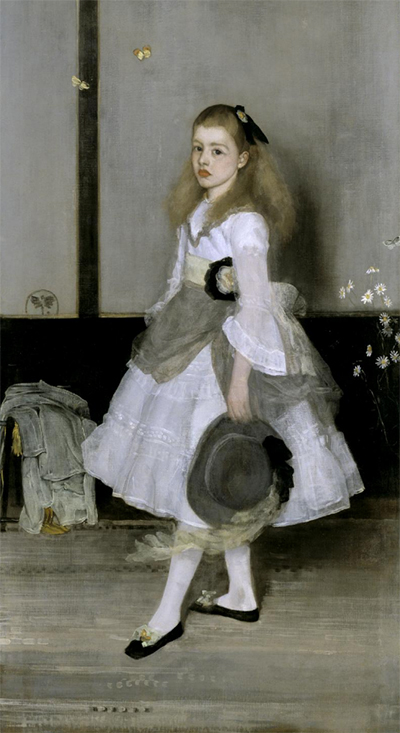Learn more about the rise to prominence of artist Whistler in this detailed biography that covers his full life and artistic career.
James Abbott McNeill Whistler was born on July 11, 1834, in Lowell Massachusetts, United States. He passed on July 17, 1903, in London, UK. The artist produced magnificent paintings of nighttime London and for his stylistically advanced portraits. He also produced brilliant lithographs and etchings. James Whistler played a major role in the introduction of French painting techniques to England. His most famous painting is Whistler's Mother.
Early Years
He was of Scottish-Irish ancestry. For a while, he lived in Russia, St. Petersburg where his father worked as a civil engineer. After a short stop in England, he sailed back to the US. James Whistler attended the US Military Academy at West Point but later left the army for the art world.
Like many artists of the time, Paris mesmerized him. He went there in 1855 to study painting and had soon started living the Bohemian lifestyle. Whistler was also drawn to the French modern movement. He also adopted realism, mainly associated with artists such as Henri Fantin-Latour, François Bonvin, and Gustave Courbet. The realism in his art could be seen in works such as Self-Portrait and The French Set.
In the 1860s, Whistler spent his time moving between Paris and England. He also went to the Brittany in 1861 and the coastal area near Biarritz in 1862. It is at this time he painted with Courbet and developed a love of the sea. The sea would feature in some of his later watercolors and oil paintings. In 1863, he settled in London, where he drew inspiration from the Thames. His works at the time garnered praise from Charles Baudelaire, a poet, and art critic.
His Move to London
Whistler enjoyed a lot of success in Paris when Symphony in White, No 1: The White Girl was displayed at the Salon des Refuses in 1863. The painting showed a lot of influence from realism and the Pre-Raphaelite movement that began in 1848 in England. The 1860s and 1807s were a particularly creative time for Whistler. It was during this period that he started giving his works musical titles. In doing this, he showed that he believed in the theory of art for art’s sake. However, it should be noted that Whistler was not an enthusiast of music for its own sake. At this time, he began to paint nocturnes of various places in London with a major focus on Chelsea.
From the 1870s onward; his focus shifted to portrait painting. At this time, he created masterpieces that include Harmony in Green and Green: Miss Cicely Alexander, Symphony in Flesh Color and Pink: Portrait of Mrs. Frances Leyland and many others. The masterpieces all underline his love for muted tones, simple forms, and his attraction to the work of Diego Velázquez, the 17th-century Spanish artist.
During his time in London, he became acquainted with most of the famous artists of the time such as Albert Moore. He fully embraced bohemianism and lived with Jo Hifferman, a woman of Irish descent who posed as a model for him and Courbet. Although low on money, he was quite the entertainer; he quickly became one of the most talked of men in the city. In 1877, a major change occurred in his life. He sued John Ruskin, a writer for his attack on Nocturne in Black and Gold, The Falling Rocket. Whistler won the lawsuit and he was awarded only a farthing, which was the least valuable coin in England at the time. The costs of the lawsuits crippled him financially, and he declared bankruptcy in 1879.
This forced him to move out of his home in Chelsea, and he immigrated to Venice with Maud Franklin, his mistress at the time. He stayed there for 14 months and soon became quite famous amongst the foreign artists that frequented the city. During his time there, he rarely painted oils and spent most of his time producing watercolors and pastels. He had been commissioned to produce etchings by the Fine Art Society. In total, he made just 50 etchings, which were some of the most striking works of the time. When he returned to London, the etchings received a lot of praise when displayed there in 1880 and 1883. He continued to paint portraits such as Lady Archibald Campbell, although with growing difficulty. This was due to his obsession with achieving perfection.
His Challenging Final Period
In his later years in the 1890s, he faced many problems. For one, he seemed to be out of step with the time. The impressionist movement had gained traction in the 1890s, but he never adopted the bright colors or techniques used by the Impressionists. Besides that, at a time when color lithographs were quite popular, he only made about four of them in color.
Whistler spent the last few years of his life trying to win points against Oscar Wilde in a drawn-out controversy and seeking publicity. He married Beatrix Godwin in 1888, and when she passed on in 1896, he was distraught, his final years were quite sad. In the early 1890s, his paintings suffered a decline in popularity. It is only in the final two decades of the 20th century that his works began to regain popularity.




